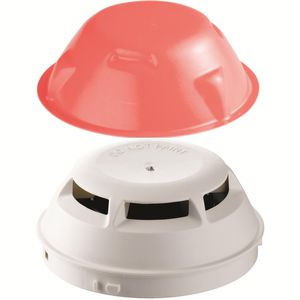
- Environment - Health - Safety
- Building Security and Machine Safety
- Heat detector
- Siemens Fire Safety
- Products
- Catalogs
- News & Trends
- Exhibitions
Fire detector FDOOTC241heatcarbon monoxideelectronic

Add to favorites
Compare this product
Characteristics
- Detected entity
- fire, heat
- Gas type
- carbon monoxide
- Technology
- electronic
- Other characteristics
- automatic, with sounder
Description
For very early and reliable detection of emerging fire, due to analysis of the three criteria smoke, heat and gas. Very fast response to all carbon monoxide (CO) generating fires and very early and reliable alarming in environments with deceptive phenomena. Works according to the scattered-light principle with two sensors, optical forward and backward scattering. Opto-electronic sampling chamber blocks disturbing extraneous light but optimally detects both dark and light smoke particles. Two additional heat sensors and an additional CO sensor increase the fire detector’s immunity to deceptive phenomena and the response characteristics of the fire detector. Selectable detection behavior by application-specific ASA parameter sets. The additional CO analysis makes it exceptionally fast and ideal for applications where the occupants make speed of detection critical (e.g. nursing homes, hospitals, sheltered accommodations etc.).
The base must be ordered separately.
Standard
EN 54-5 , EN 54-7 , EN 54-17 , CEA 4021 , VdS 2806
Protection category
IP43; IP44 with base attachment
Operating voltage
DC 12…33 V
Operating temperature
-20…50 °C
Storage temperature
-20...+55 °C
Quiescent current
320...400 μA
Ext. alarm indicator
2 without sounder base 1 with sounder base
System compatibility
FS20 (MP2.1)
Communication protocol
FDnet
Relative humidity
15...90 % (0...99 % Short-term moisture condensation permitted)
Permissible air speed
1…20 m/s
Dimensions (Ø x H)
100 x 46 mm
Color
Pure white, ~RAL 9010
*Prices are pre-tax. They exclude delivery charges and customs duties and do not include additional charges for installation or activation options. Prices are indicative only and may vary by country, with changes to the cost of raw materials and exchange rates.
















